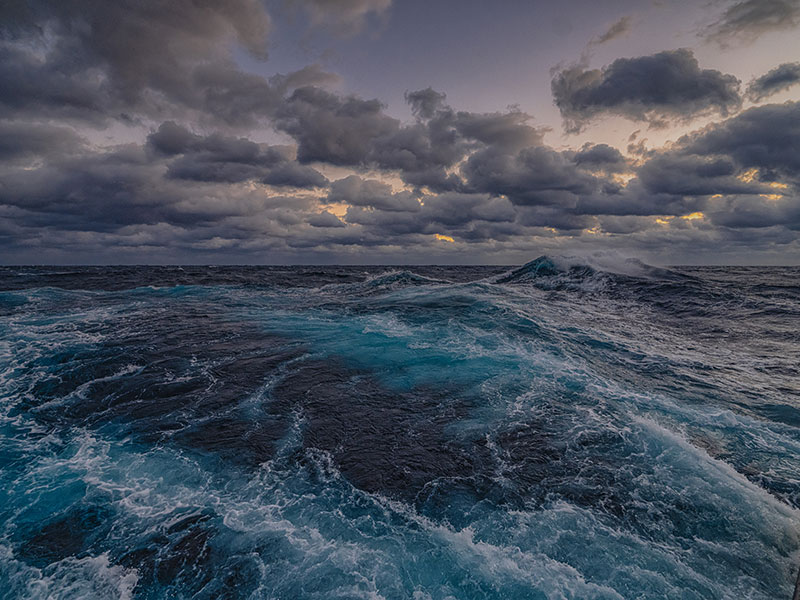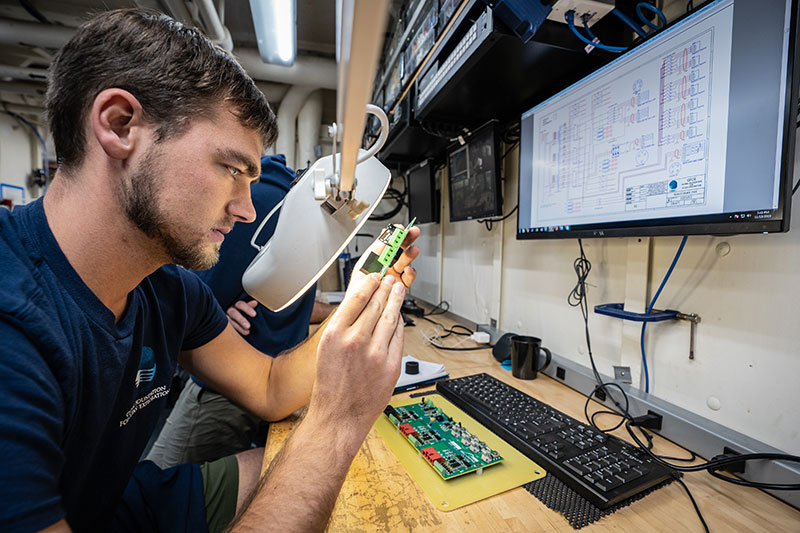
Date: November 12-13, 2019

While a rough ocean is still a beautiful ocean, it can hamper remotely operated vehicle operations. On November 13, the planned dive for the 2019 Southeastern U.S. Deep-sea Exploration was canceled due to the rough seas shown here. Image courtesy of Art Howard, Global Foundation for Ocean Exploration, NOAA Office of Ocean Exploration and Research, 2019 Southeastern U.S. Deep-sea Exploration. Download larger version (jpg, 9.9 MB).
After a brief stay in port in Charleston, South Carolina, we returned to sea and resumed operations on November 12. That afternoon, the Science Team had a planning call to discuss the dive plans for November 13 and the remainder of the expedition. Given its proximity to Charleston, and the fact that the dive had already been planned, the team decided to dive on November 13 on the second site identified by our U.S. Geological Survey and Bureau of Ocean Energy Management colleagues. But, the weather was not looking good in the Blake Plateau region off Florida coast for the foreseeable future, so even though we were hoping for the best, we were planning for the worst.
Early on November 13, the team made the call. No dive. The seas were once again too rough. What were 12-foot waves on Wednesday were forecast to become 20-foot waves by the weekend. The Mission Team collectively made the decision to skip over the remaining dives originally planned for the Blake Plateau region and head south toward Miami and the Florida Keys and out of the Gulf Stream in hopes of finding calmer seas.

When the remotely operated vehicles (ROV) can’t be deployed, our engineers ensure these vital exploration tools are in tip-top shape and ready for the next dive. Here, Levi Unema, electrical engineer, examines electronics that support ROV operations. One missed connection could mean a valuable piece of data lost miles below the surface. Image courtesy of the NOAA Office of Ocean Exploration and Research, 2019 Southeastern U.S. Deep-sea Exploration. Download larger version (jpg, 6.7 MB).
As mentioned in the previous daily update, there’s always plenty to do on the ship when the remotely operated vehicles are not deployed. Mapping operations started up again, and other onboard personnel continued with dive planning, training, maintenance, and preparing for the winter repair period. Those of us on shore have been missing our daily dose of diving, but we’ve also continued to support the expedition on diveless days, including by writing and posting content for the expedition website, providing updates on social media, and planning ship-to-shore live interactions.